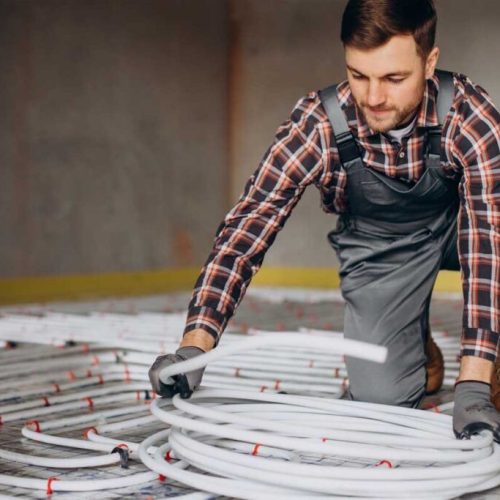Underfloor Insulation
Feel Unmatched Warmth with Our ECO4-Covered Services
Determine the health of your building with our comprehensive energy assessment services! Let our experts evaluate your building’s energy efficiency and provide actionable insights for improvement.
Why to Opt for Underfloor Insulation?
Adding underfloor insulation is simple: access the space via an access hatch, install nets under the floor, and fill them with insulation. If you don’t have a hatch, you can create one, typically in a cupboard. With rising gas prices, ensuring your home is well-insulated is crucial, and underfloor insulation is a great starting point. If you already have cavity wall insulation but haven’t addressed your floors, consider exploring available grants for underfloor insulation. Contact us to discuss funding options.
How to Start?
Reason why you should choose today:
Understand Underfloor Insulation
- Save money: Find ways to cut your energy bills, often saving hundreds annually.
- Boost comfort: Eliminate cold spots and enjoy a consistently warm home.
- Reduce carbon footprint: Use less energy and lower your home’s emissions.
- Access ECO4 Grants: Get government funding for recommended energy-saving improvements.
What to Do?
Before insulating your floor, prepare the area by lifting the floorboards to inspect the joists and wooden beams. Check for damage and repair as needed. If joists are on exposed clay or soil, lay a vapour barrier to prevent moisture from rising into your home.
Now, it’s time to make your underfloor space warm and comfortable. Cover the joists with a special material that lets air through but blocks out drafts and moisture. This material will create spaces where you can put insulation.
For your insulation, choose a high-quality, natural material like sheep’s wool, wood fibre, or Jute insulation. These materials act like nature’s air conditioners, helping to control moisture by absorbing and slowly releasing it when humidity levels change.
What and How?

Understand Underfloor Insulation
Underfloor insulation fills the space between the ground and a suspended floor to block cold air from entering your home. It works by sealing gaps that draft-proof liners miss, ensuring better heat retention and faster heating. This not only saves on energy costs but also helps keep your home cool in summer by preventing heat from rising from the ground.

The Right Approach for Installing Underfloor Insulation
To install underfloor insulation, focus on three key elements: heat retention, moisture control, and draught prevention. First, use high-performance insulation to trap and retain heat, keeping your home warm. Next, select a moisture control material that absorbs and releases water vapour to prevent dampness and mould. Finally, apply an air-tight barrier to seal gaps and cracks, stopping draughts and air leaks.
The table below illustrates statistics from the Energy Saving Trust showcasing average annual energy savings based on your house type:
-
Detached house £65
-
Semi-detached house £40
-
Mid-terraced house £25
-
Bungalow £60
Adding the Final Touches
Complete your insulation project by placing a layer of vapour control material on top of the underfloor insulation. Tape all overlaps and edges securely, including where the floor meets the walls. Once done, replace your flooring to enjoy warm, cosy floors.
For a 2-3 bedroom home, the average cost of an Air-to-Air Heat Pump ranges from £1,500 to £3,500, while an Air-to-Water Heat Pump costs between £8,000 and £18,000. These figures are averages; contact a local installer for a precise quote. The UK government’s ECO4 Scheme can provide a £7,500 grant towards these costs.
Ready to ditch the drafts and embrace cosy comfort?
Contact ECO Engine Limited today! We’ll show you how underfloor insulation can transform your home into a haven of warmth, savings, and sustainability.

